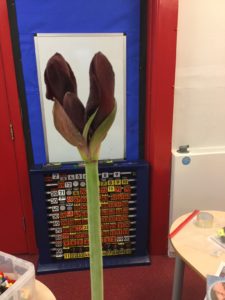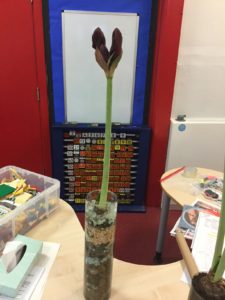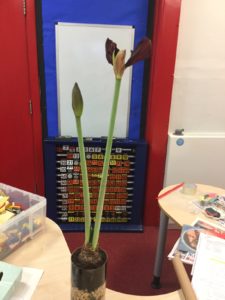Moortown Park consultation
Thank you to those parents and carers who came to view the proposed plans for Moortown Park.
As part of the pupil consultation, Helen Forman, Senior Design Officer at Leeds City Council, met with our School Council and spoke to all children in a whole school assembly. She commented the children had lots of intelligent questions and comments.
The feedback will be considered and they feel hopeful to incorporate the changes that were suggested including the monkey bars that quite a few children asked for.
The equipment will be ordered soon, ready for installation at the play park so thank you for your input.

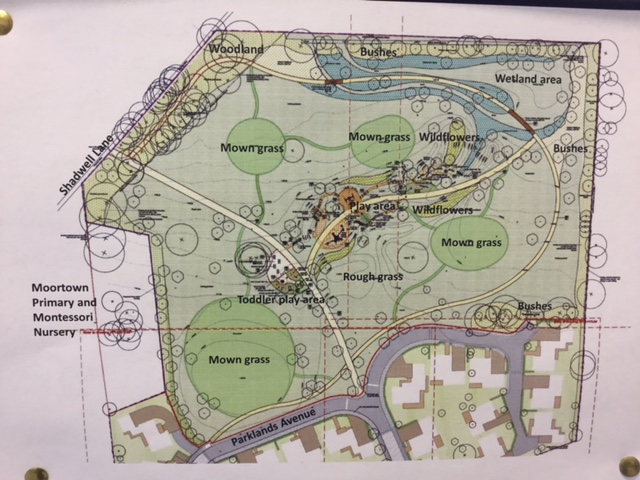
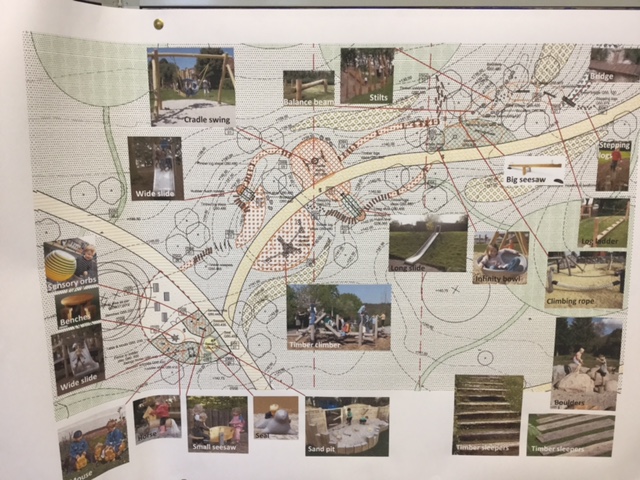
Living and Learning – feeling relaxed
Today, our Living and Learning lesson focused on how to make our bodies (drop the y for an i – body) feel relaxed. We thought of some ways we can become relaxed and the children shared some great ideas.
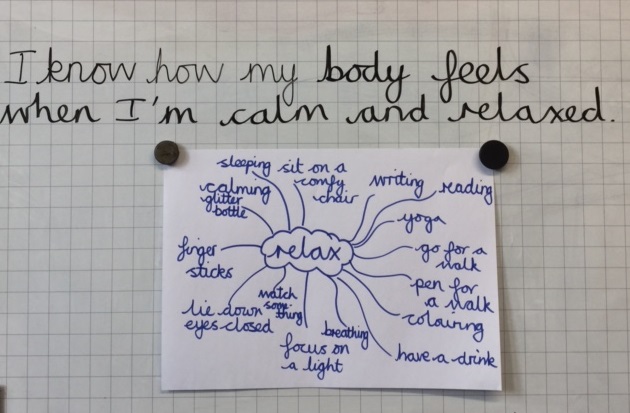 We focused on yoga, in particular, as a way of stretching and relaxing our bodies.
We focused on yoga, in particular, as a way of stretching and relaxing our bodies.
Here’s the mountain pose – standing tall and straight.
Next, here’s the star pose – stretching into our hands and feet to keep our arms and legs straight.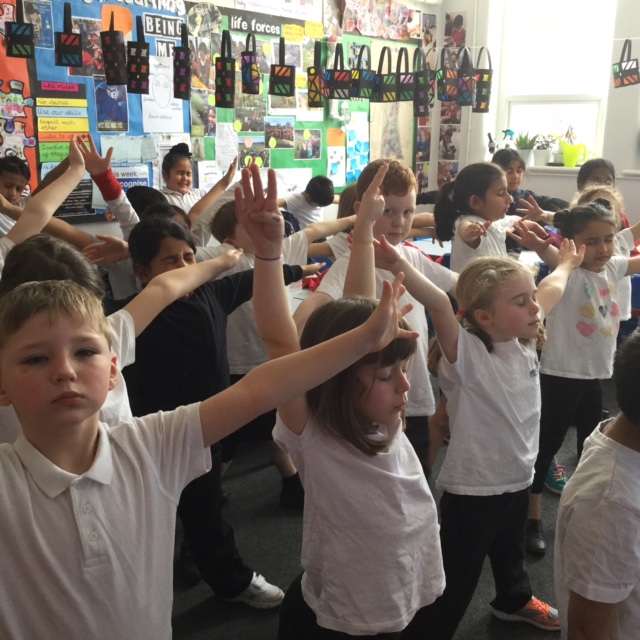
Breathing is very important in yoga. When we become excited, angry or upset, our breathing can become very fast. Trying to slow it down by taking deep breaths can sometimes be a helpful way for us to feel calmer.
We learnt different breathing techniques as part of our mindfulness learning earlier in the year and today we tried back to back breathing.
‘It was relaxing to feel your partner breathing at the same time as you.’


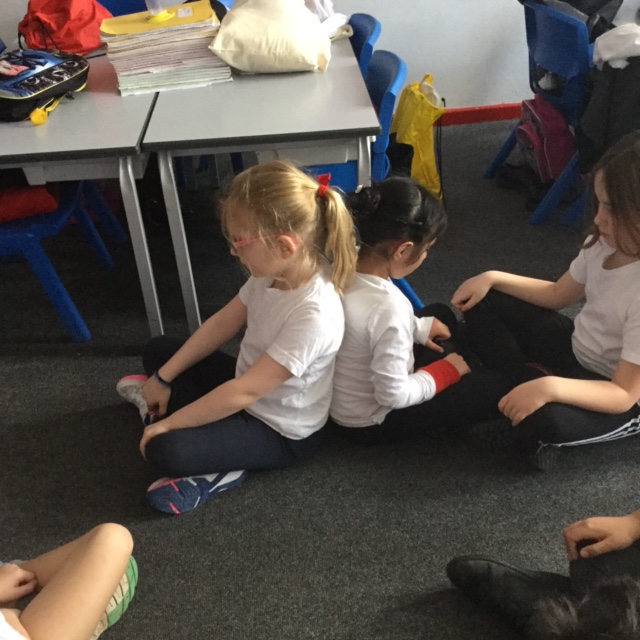

Ask your child to show you two other poses we tried – the flower pose and child’s pose.
Living and Learning – proud but not showing off
In our Living and Learning lesson today, we had a good discussion about this week’s statement. Here’s a summary of the some of the differences the children thought of.

Social Media and Us!
Today, as part of our reading session, we read the FirstNews papers. We came across this article on the front page and the children decided it was an important issue to discuss.
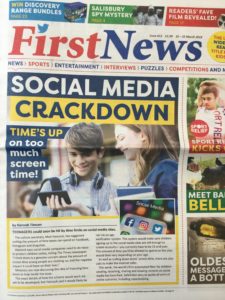
We immediately put a stop to our reading session and discussed our use of social media as a class. We discussed a lot about being online: the benefits, the negatives, how much we time we spend online, how adults use social media and much more!
Much of what we discussed was positive. Children were able to see the huge benefits that being online and social media can have. They were able to say what they should do if they come across something they’re not happy with and most children said they have spoken to their parents about how to stay safe online and when using social media. We also learnt that some parents keep the password for devices from their children so that they know exactly what their children are doing online.
However, there were also some less positive things that we learnt through our discussion:
- Despite the recommended age for using social media sites being 13+, 17 children said they use at least one site regularly (Facebook, SnapChat, WhatsApp, Twitter, Instagram, Musically etc)
- 14 children claimed they are online for more than 2 hours every school day
- 13 children claimed they are online for more than 3 hours every school day
- 8 children claimed they are online for more than 5 hours every school day
- 10 children said they think they spend too much time online
- 3 children admitted they think they spend too much time online but don’t know how to stop
- 21 children said they have constant access to a device that lets them get online (phone, tablet, laptop, Xbox, PlayStation)
- When playing games online, some children have played as part of a group with someone they don’t know
- 13 children admitted that they have talked to someone online that they didn’t know (we discussed how we all make mistakes but the best thing to do in this circumstance would be to block the person and tell our parents about the incident)
We also discussed how it’s not just children that are affected by the things we discuss. Adults are just as vulnerable online! And, 25 children in Year 5 said they think their parents spend too much time on their phones, tablets and laptops.
Obviously these facts are not 100% reliable but it was interesting to hear the children discuss this with complete honesty and great maturity. Please discuss this with your child – it’s super important for this generation!
PE – yoga
Today, we practised our yoga skills during our PE lesson. We’ve been learning all about yoga this half-term and we’re now getting pretty good! We know that yoga can improve our flexibility and balance but we’re most impressed by how relaxing it can be. Today, we used some poses we’re familiar with to create our own sequences. Then, we performed our routines for another pair who gave us feedback using an observation sheet. Here are some action shots…
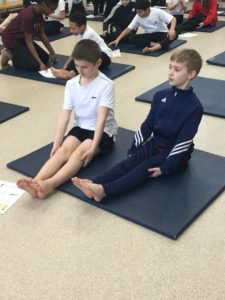
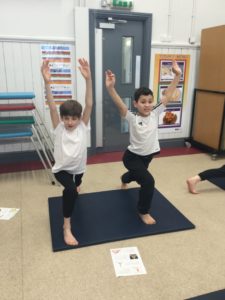

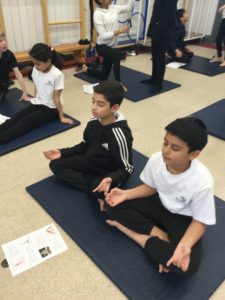
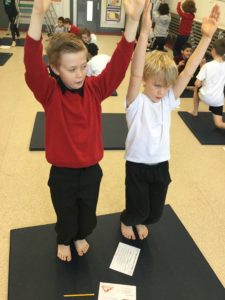
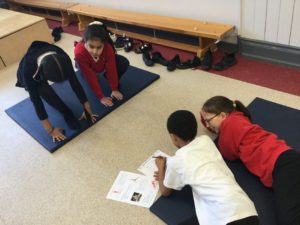
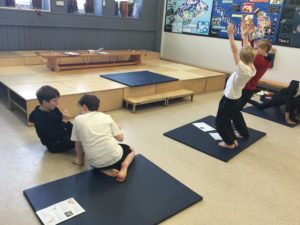
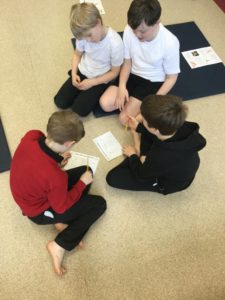
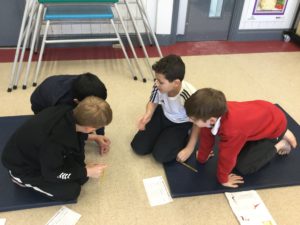
Our football coaching continues…
Written by Stan: Today in football we practised shooting. First off, we just worked in our groups -Nishaan, Stan, Grace and Pavan (who was hurt so she didn’t play). We practised free kicks. Then, someone would lay the shooter and they would hopefully score. We did that until Miss Rushbrooke called us in. After Miss called us in, we played 4 corners – if you know how to play 4 corners, you will know how to play 6 corners; it is basically the same game just with 6 corners instead. We played that until the end of the lesson.
Written by Aleena: In this session, we started off by getting into a circle and stretching our bodies. Hibba was our physio, Edward was our manager, Matthew was our kit manager, Megan was our coach and I was our press officer. After getting our hearts beating , we then played six corners.This is where there are 6 teams which try to get each other out .We all had a number. Number one would be the least confident player and number five would be the most confident player. We played two games and it was very enjoyable. There were a few people that were a bit negative. But most people put all of their effort into the game. Megan especially stood out. She helped the less confident players. Overall, I think today’s lesson was very good.
Written by Archie: This week in PE , Year 6 continued football. Today, we have been practising shooting. Our team put one person in the net, one person in defence and the other three were attacking. After training was done, we got in a circle and passed the ball to random people. Then, we got into six corners. Our group only won once but when someone lost, Phoenix said: ‘If you had fun, then you won.’
Written by Owen: In this week’s football session we practised shooting and passing. Near the end we played four corners – well six corners. But apart from that, my group (Stanley, Saleem, Brandon and me – Owen) played very well and so did others. To sum up this week’s session, it went very well.
Art Attack
Today, we have started our new mini topic, Art Attack, and our first lesson was all about exploring colour. As well as using different art techniques, we’ll learn about some famous artists too.
Here are some of the Year 2 art objectives we will be covering.
- Can your child respond to and explore ideas?
- Can your child investigate and use materials and processes (eg drawing, painting, 3D work, collage, printing, e-art, textiles) to communicate ideas and make images / artefacts?
- Can your child investigate and use a variety of visual and tactile elements (eg when using colour, shade, pattern, line, texture, form, shape, composition, scale, proportion and tone) to communicate ideas and make images / artefacts?
- Can your child describe what they think or feel about their own and others’ work (including that of significant artists), making suggestions to improve?
- Can your child comment on differences between pieces of art?
- Can your child name the primary and secondary colours?
- Is your child aware of different grades of pencil for drawing?
After reading about the life of Vincent Van Gogh in our guided reading lesson, we compared his work with the work of Wassily Kandinsky. It was interesting to hear the children’s differing views when talking about some of their famous pieces of art. We respected each others’ opinions.
Based on our Living and Learning statement this week, I know the difference between being proud and showing off, we considered how these artists would have felt about their paintings.
Here we are creating secondary colours from primary colours.





We looked at the way Kandinsky had used colours, warm and cold, to create his painting, Squares with concentric circles, and then began to create our own versions. We’ll be back to our paintings later in the week.

Fun in the snow!
Today, we embraced the weather by taking the opportunity to explore ice and snow.
The children used their excellent team work and followed instructions to build Harry the snowman. There was lots of conversation involved and the children listened to each other’s ideas really well. Here is how Harry turned out!


There was a colour mixing investigation during our ice painting session!
School Savings Club
The next School Saving Club paying in date is Thursday 22 March 2018 at 3.15-3.45pm.
If you’re unable to attend in person, please hand in any money to be deposited to the office in a sealed envelope addressed to Mrs Tiffany.
The paying in dates are the penultimate Thursday of each half term and for the summer term, these dates are Thursday 17 May and Thursday 12 July at 3.15-3.45pm.
Finally, if your child would like to open account, please ask at the office.
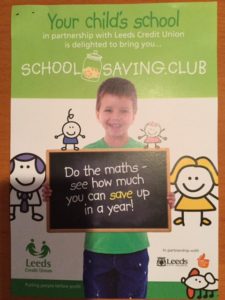
A burst of colour
